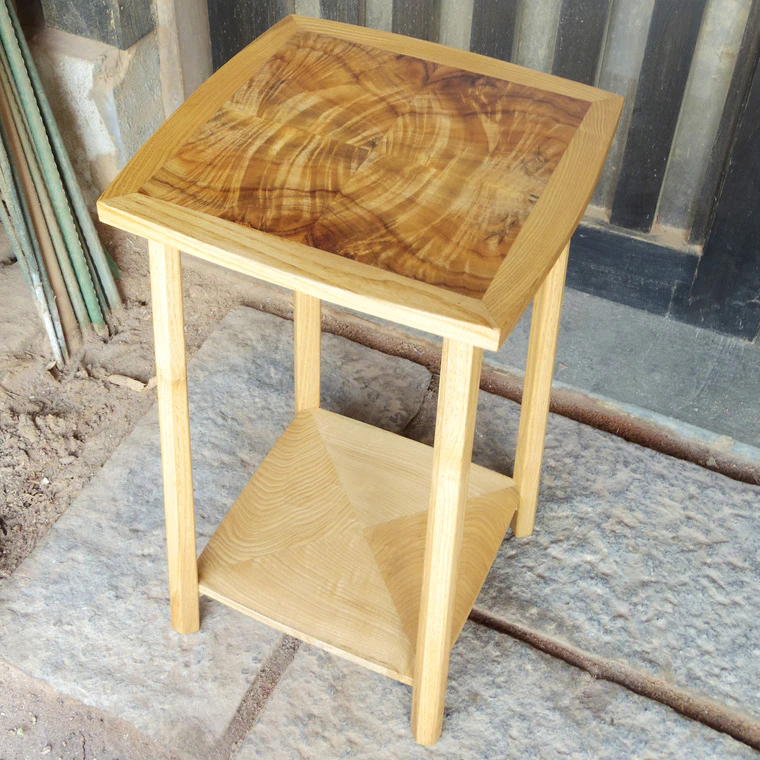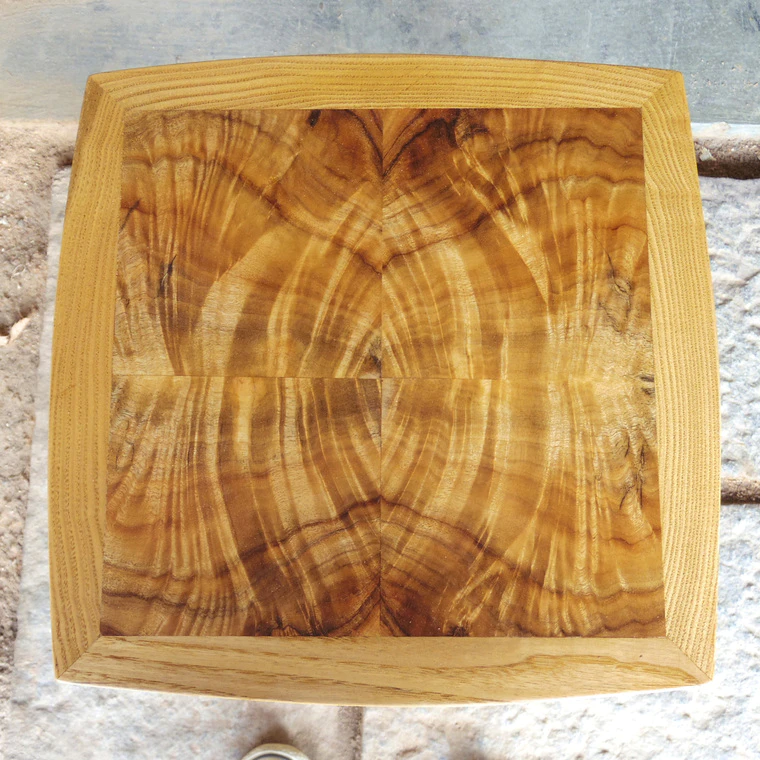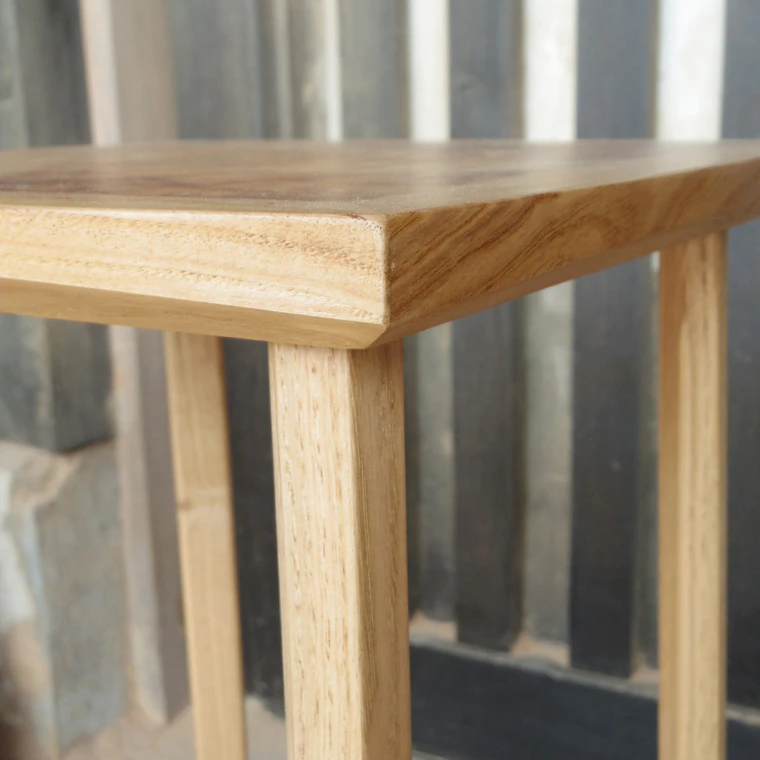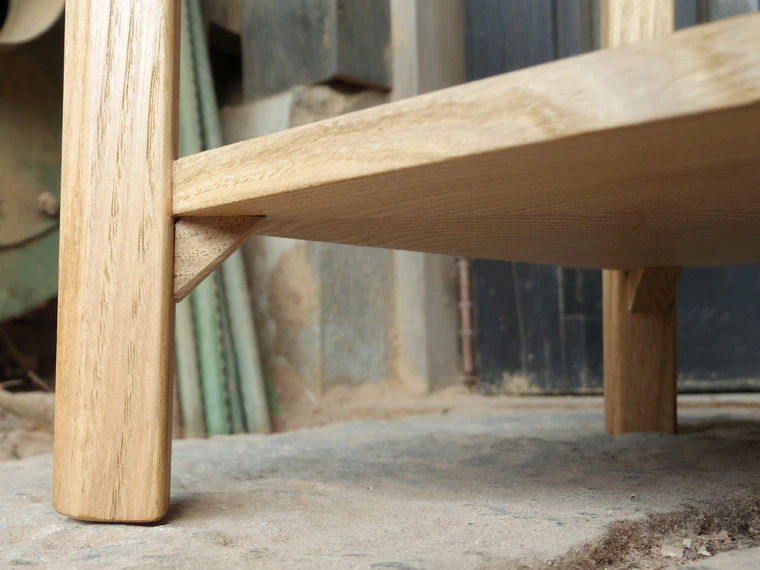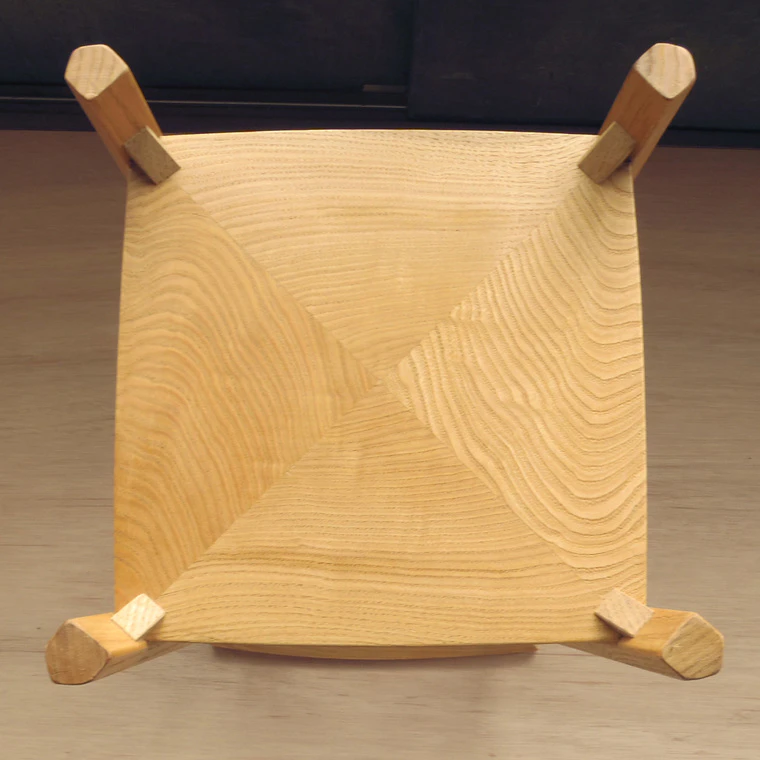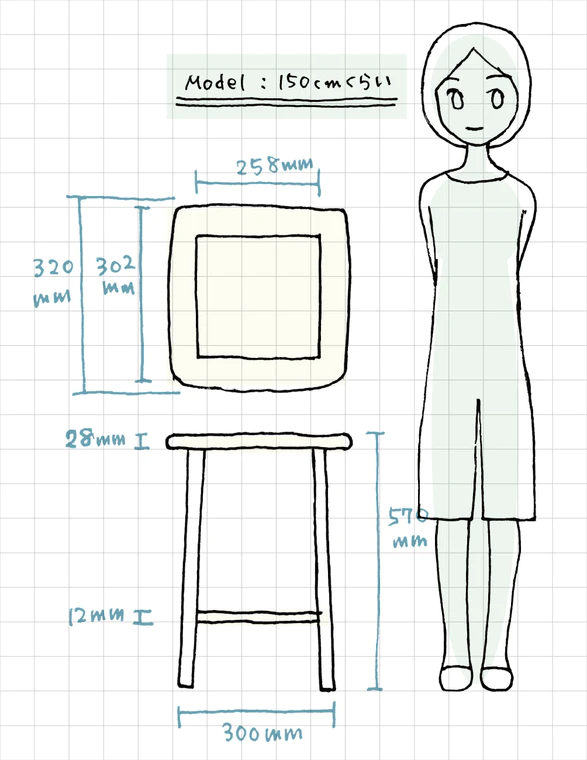Camphor Laurel and Chestnut shelf
H 57 / ø 32 cm,Year.2018Katsuyuki Okada
1943 -- Wood and Bamboo
- Price Range Please Inquire
About the Artwork
The top board with amber colored marble patterns is camphor wood, and the other parts are made of chestnut wood. It is a simple and compact shelf, more like a telephone table rather than a decorative shelf.
By combining totally different wood grains, the rich amber-like colors of the camphor wood and the simple wood grains of the chestnut wood, I was able to make a shelf that looks quite impactful when seen from the top, but very simple overall.
In spite of its simplicity, I actually added some variation. The wood grain of the rims of the top shelf change towards the middle, the legs of the shelf are pentagonal, and you can enjoy the wood joinery techniques to the details.
As I used traditional wood joinery techniques to make this piece, no metal parts have been used. The color is natural with no colors added.
Description
-
CategoryWood and Bamboo
-
MaterialsCamphor Tree, Chestnut
-
DimensionsH 57 / ø 32 cm
-
Year presented2018
-
InstructionsAs a transparent coating is applied, this shelf is waterproof.
However, please avoid sudden heat (placing under the heater, near a hot kettle or iron kettle etc.) or use of sharp blades, hammers etc. as this may cause damage to the wooden body. Please also avoid nail polish and other chemicals as this may cause the coating to peel off.
Please be aware that wood expands and shrinks depending on where it is used as it absorbs and releases moisture even after being processed. For example, even by moving the shelf among nearby regions in western Japan, a distortion may occur as the humidity is different.
The distortion is very small, but this may cause a slight defect.
Please be aware of this as it is the nature of wood.
Please feel free to contact me if you have any questions.
Techniques Used
Wood joinery
In wood joinery (sashimono), wood boards are cut into panels with care to how the grain patterns will fit together in the final piece. The wooden panels are then cut or carved to create interlocking joints. These joints, which are the key feature of wood joinery, make it possible to connect boards at right angles to produce boxes and other articles. Wood joinery is assembled without the use of nails or any other metal hardware.
Please feel free to contact us to commission work, check artworks available for purchase etc.

